Puzzles
Department Literary Lode
The old man stood in the blacksmith shop and watched as eager children waited for their turn to receive a horseshoe nail ring.
It is likely that many of the youngest children had no notion of what a horseshoe nail was for, but the old man knew.
Decades before, he had stood in just such a shop. The smell of coal, the black dust which covered everything, the stamp of the horses’ feet, the glow of the fire and the noise of the hand-cranked blower were as much a part of his childhood as computers were to these children.
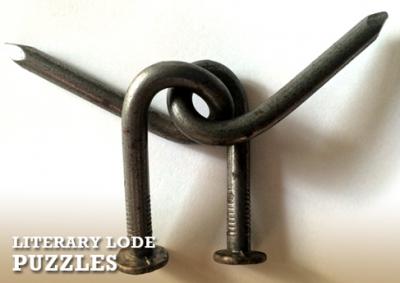
If the rings weren’t lost first (as often happened) they would rust within a few days, leaving a brown circle around their fingers. Their parents had to be forewarned of this fact by the blacksmith, but the old man knew.
Finally, the last child had darted out the door to explore the rest of the ranch, but the old man stayed behind.
Hesitantly, he approached the blacksmith. “I had one of those when I was a boy,” he confided. “I was always hanging around the shop. He made it just for me.”
They chatted for a while about children and shops, about blacksmith puzzles and horseshoe nail rings and about a time when work which used both head and hand were understood and valued.
At last, with even more hesitancy, the old man asked, “Do you think you could make me a ring?”
The blacksmith looked at the old, gnarled hands, their fingers swollen with age and decades of work.
“Sure.”
A long nail for draft horse shoes was excavated from a stubborn, tool-filled drawer and the blacksmith set to work.
The simplest blacksmith puzzle is familiar to children around the world. Two nails, each bent in a circle and slipped together provide one of children’s earliest head and hand exercises. With the admonition, “If you have to force it, you’re doing it wrong,” a parent or grandparent hands the puzzle over, explaining that the idea is to take it apart.
As often as not, numerous failed attempts lead to a sort of success when the puzzle simply falls apart while the child is not paying attention.
Eventually, by luck, trial and error, or by actual reasoning, the puzzle will be taken apart, put back together, shown with triumph to friends and family and, like the horseshoe nail ring, lost.
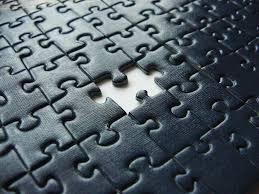
The blacksmith remembers. At about age five, such a puzzle was a grandfather’s gift, but the admonition was as important as the puzzle. The puzzle was solved, but a couple of weeks later a contrary peanut butter jar lid refused to go on smoothly. Just about ready to try to force it on, a memory surfaced. “If you have to force it, you’re doing it wrong.” The lid was unscrewed, placed correctly on the jar and screwed on with no difficulty.
Puzzles teach. Puzzles taught by computer or drawn on paper teach how the brain can direct the hand to use a computer or a pencil. There is nothing wrong with that, but there is another kind of learning. It uses head and hand as a team. The hand works with the problem, which is literally “at hand” and conveys its findings to the brain. The two work out the problem thought by thought and sensation by sensation. Would the brain have solved the problem of the jar lid as easily if the hand hadn’t conveyed the sensations of angle and gradual tightening?
Wood and string puzzles were easily made and equally educational. Small scraps of wood left over from construction projects were often used for kindling, but some became simple toys. Today, large scraps are often tossed out in quantities, which would quickly be snatched up for cooking fires and even shelters in many parts of the world.
The blacksmith fills in spare moments making wood and string puzzles with scraps of wood rescued from construction sites. Two small scraps of wood, a length of string, and four holes create a puzzle, which is even more challenging than two nails linked together. Force is not an issue. Thinking is. The philosophy of this puzzle is, “Pay attention to what you’re doing or you’ll make the same mistake a hundred times in a row.”
And people do make the same mistake a hundred times in a row. Their hands and brains need practice working together.
Larger scraps of wood and small disks sliced off the handle of a worn-out broom handle become checkerboards in the blacksmith shop. The black squares and the black checkers are colored by the touch of glowing hot iron from the forge fire. Here, at least, youngsters need no direction from the blacksmith. They seize upon the board as if they were born knowing the game, and are soon playing with a focus and concentration, which might astonish their teachers.
Here, too, head and hand work together. As often as not, while the head is deciding on a move, the player’s hand will hover over the board, waiting to play its part.
The horseshoe nail rings, the blacksmith puzzles, the scraps of wood and string have little monetary value. Their value lies in the connections they make — between grandparent and grandchild, between hand and brain, between youth and age.
The blacksmith completes the horseshoe nail ring and hands it to the old man. Even with the circle not quite closed, it barely fits over the gnarled knuckle. Though there are tears in his eyes, the old man smiles, says “Thank you,” and leaves the shop.
It’s a small thing, that ring. There are people who wouldn’t understand why it was so important.
The blacksmith knew.
* * * *
Author’s note: This true story was written by the blacksmith, Lyndel Meikle. In nearly 30 years of demonstrating forge work, she has learned much more than she has taught.
* * * *
*Find other western articles by Lyndel at: http://www.distinctlymontana.com/search/node/Lyndel%20Meikle

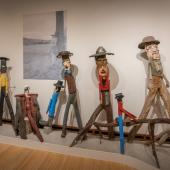
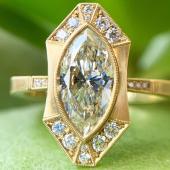
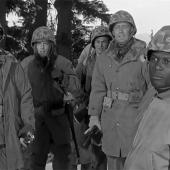

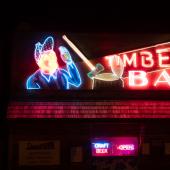
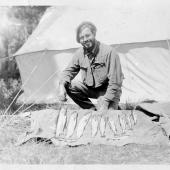

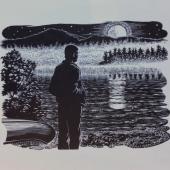
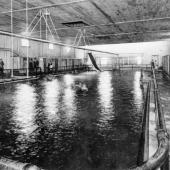
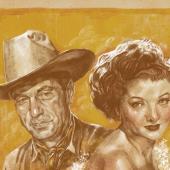

Leave a Comment Here